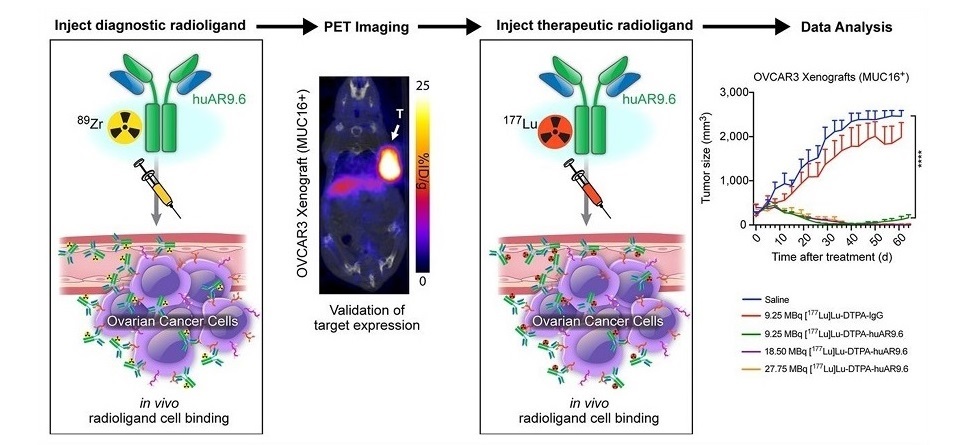Identifying Brain Networks Using Metabolic Brain Imaging-Based Mapping Strategy
By MedImaging International staff writers
Posted on 31 Jul 2014
A new image-based strategy has been used to identify and gauge placebo effects in randomized clinical trials for brain disorders. The researchers employed a network mapping technique to identify specific brain circuits underlying the response to sham surgery in Parkinson’s disease (PD).Posted on 31 Jul 2014
The study’s findings were published in the July 18, 2014, in the Journal of Clinical Investigation. PD is the second most common neurodegenerative disease in the United States. Those who suffer from Parkinson’s disease most frequently experience tremors, slowness of movement (bradykinesia), rigidity, and impaired balance and coordination. Patients may have a hard time talking, walking, or completing simple daily tasks. They may also experience depression and difficulty sleeping due to the disease. The current standard for diagnosis of PD disease relies on a skilled healthcare professional, typically an experienced neurologist, to determine through clinical examination that someone has it. Currently, there is no cure for PD, but drugs can improve symptoms.
![Image: PET scans highlight the loss of dopamine storage capacity in Parkinson’s disease. In the scan of a disease-free brain, made with [18F]-FDOPA PET (left image), the red and yellow areas show the dopamine concentration in a normal putamen, a part of the mid-brain. Compared with that scan, a similar scan of a Parkinson’s patient (right image) shows a marked dopamine deficiency in the putamen (Photo courtesy of the Feinstein Institute’s Center for Neurosciences). Image: PET scans highlight the loss of dopamine storage capacity in Parkinson’s disease. In the scan of a disease-free brain, made with [18F]-FDOPA PET (left image), the red and yellow areas show the dopamine concentration in a normal putamen, a part of the mid-brain. Compared with that scan, a similar scan of a Parkinson’s patient (right image) shows a marked dopamine deficiency in the putamen (Photo courtesy of the Feinstein Institute’s Center for Neurosciences).](https://globetechcdn.com/mobile_medicalimaging/images/stories/articles/article_images/2014-07-31/JQR-574.jpg)
Image: PET scans highlight the loss of dopamine storage capacity in Parkinson’s disease. In the scan of a disease-free brain, made with [18F]-FDOPA PET (left image), the red and yellow areas show the dopamine concentration in a normal putamen, a part of the mid-brain. Compared with that scan, a similar scan of a Parkinson’s patient (right image) shows a marked dopamine deficiency in the putamen (Photo courtesy of the Feinstein Institute’s Center for Neurosciences).
Investigators from the Feinstein Institute’s Center for Neurosciences (Manhasset, NY, USA), led by David Eidelberg, MD, has developed a strategy to identify brain patterns that are abnormal or indicate disease using 18-F flurorodeoxyglucose (FDG) positron emission tomography (PET) metabolic imaging techniques. Up to now, this approach has been used effectively to identify specific networks in the brain that indicate a patient has or is at risk for PD and other neurodegenerative disorders.
“One of the major challenges in developing new treatments for neurodegenerative disorders such as Parkinson’s disease is that it is common for patients participating in clinical trials to experience a placebo or sham effect,” noted Dr. Eidelberg. “When patients involved in a clinical trial commonly experience benefits from placebo, it’s difficult for researchers to identify if the treatment being studied is effective. In a new study conducted by my colleagues and myself, we have used a new image-based strategy to identify and measure placebo effects in brain disorder clinical trials.”
The researchers used their network mapping technique in this study to identify specific brain circuits underlying the response to sham surgery in PD patients participating in a gene therapy trial. The expression of this network measured under blinded conditions correlated with the sham study participants’ clinical outcome; the network changes were reversed when the subjects learned of their sham treatment status.
Lastly, an individual’s network expression value measured before the treatment predicted his/her subsequent blinded response to sham treatment. This suggests, according to the investigators, that this innovative image-based measure of the sham-related network can help to reduce the number of subjects assigned to sham treatment in randomized clinical trials for brain disorders by excluding those patients who are more liable to display placebo effects under blinded conditions.
Related Links:
Feinstein Institute’s Center for Neurosciences














